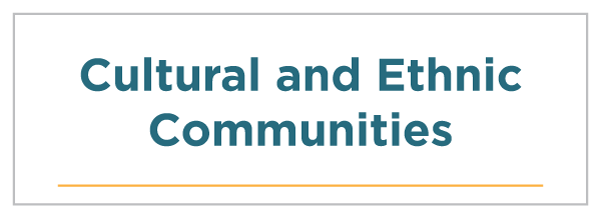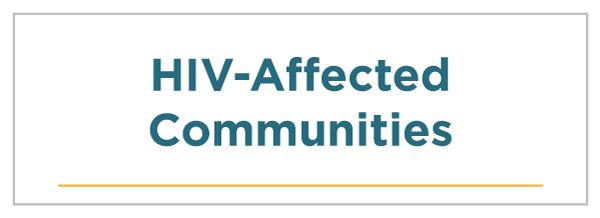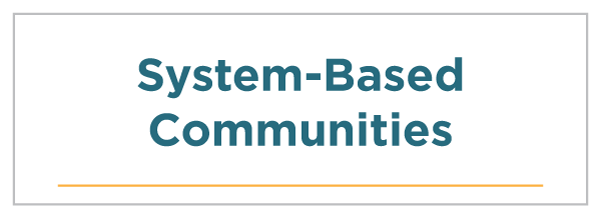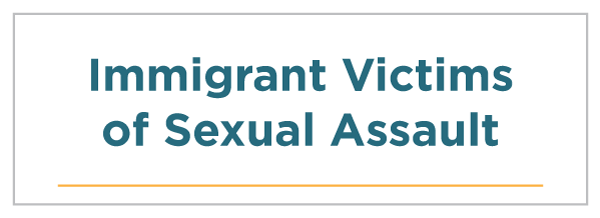
 |
 |
 |
 |
 |
 |
 |
 |
 |
 |
 |
 |
Victim-centered SART responses need to provide competent, culturally relevant, and responsive care. SARTs and member organizations can choose from a variety of trainings based in cultural competency or cultural responsiveness. The concept of “cultural competency” often includes a well-meaning but misguided notion that service providers can reach some predetermined level of expertise in working with one or many specific cultures and that learning will be “done” at some point.
The concept of “cultural responsiveness” is rooted in the idea that expanding one’s knowledge of culture and diversity is a lifelong learning process, a way of thinking, and a mindset grounded in genuine curiosity and equity.
Trainings focus on noticing a behavior or response, pausing to wonder why it is happening, and then asking questions to understand. This is in opposition to noticing a behavior, making rapid judgments, and acting upon these assumptions as if they were true. Cultural responsiveness trainings explore ways for service providers to provide non-judgmental, trauma-informed care when providing services to any victim.
For ideas on how to incorporate cultural responsiveness, see Incorporating Cultural Responsiveness in Services.
Census demographic data suggests that the U.S. population is racially, [1] ethnically, [2] and linguistically diverse. [3] U.S. residents also differ greatly with regard to sexual orientation, [4] gender identity, [5] age, [6] socio-economic status, [7] and able-ness. [8] Changing demographics require new approaches in service delivery to ensure SARTs are meeting the needs of victims from different cultures.
SARTs should ask how best to serve each community that lives in their jurisdiction when designing and delivering services. SARTs can conduct culturally responsive community needs assessments. Serving diverse populations within a SART jurisdiction could include meeting specific needs for victims from many different populations:
Culturally sensitive SART responses should include a heightened awareness of how victims’ environments and cultures shape their healing process. For examples of cultural responsiveness, see SART Roles in Effectively Serving Immigrant and Limited English Proficiency Victims.
As the diversity of the United States grows, so does the need for SARTs to prepare to meet the needs of diverse victims. This presents complex challenges for SARTs, especially if resources are not allocated to meet these needs or when needs exceed available resources. [9] However, SARTs can take cost-effective steps to meet the diverse needs of their communities. For example, SARTs can seek seed funding for a specific outreach project, expand partnerships with culturally specific organizations, or expand alliances with corporate partners.
Some examples of agencies with whom SARTs can collaborate include — [10]
Linking victims with organizations that communities trust and with whom communities can easily communicate can facilitate their recovery and participation in the criminal justice and healing processes. Having a relationship with diverse organizations will help SARTs make referrals because they will know the agency or program and be able to tell victims how to connect with an individual who understands sexual assault.
SARTs can bolster efforts to meet diverse needs by — [11]
SART members should be aware of the role historical trauma plays in an individual’s experience as a victim of sexual assault. Historical trauma is the collective emotional and psychological injury of a population both over the lifespan and across generations. [12] These populations include immigrants and refugees as well as people of color.
Many communities have experienced persecution, hostility, and ill treatment, especially because of race, political, or religious beliefs. [13] Because of the ill treatment, communities and individuals experience ongoing historical trauma, including physical and psychological health problems. The effects of the trauma can be held individually and passed through generations. [14]
Historical trauma may look like emotional distress, interpersonal dysfunction, or a propensity for unhealthy coping mechanisms, such as substance abuse. [15] SARTs can address historical trauma by extending invitations to communities that may have experienced historical trauma to be part of the team. SARTs can also invite communities to participate in focus groups to learn more about how to best serve them.
Including historical trauma in conversations allows service providers to open the door for healing, and establish new expectations around reporting. Without acknowledging historical trauma, SARTs will continue to see low rates of reporting and experience challenges in serving the needs of marginalized communities.
Read more about the way historical trauma may affect some cultures in the Tribal, Black and African American, and Immigrant and Refugee populations in the respective sections of the SART Toolkit. Although the examples may not apply to every individual who identifies with these communities — and hardly cover every example of historical trauma in even a small fraction of communities — sharing the experiences of some individuals from some communities may inspire you to learn more, ask questions, and be responsive to individuals from all communities.
Conversations About Historical Trauma, Part One (PDF, 2 pages)
Conversations About Historical Trauma, Part Two (PDF, 2 pages)
Conversations About Historical Trauma, Part Three (PDF, 2 pages)
This three-part series published by the National Child Traumatic Stress Network in 2013 discusses historical trauma’s implications for mental health service delivery. The series offers insights to mental health professionals on the intergenerational impact of historical trauma on victims and their descendants.
Fact Sheet: Historical Trauma (PDF, 3 pages)
This fact sheet from Substance Abuse and Mental Health Services Administration’s (SAMHSA’s) GAINS Center for Behavioral Health and Justice Transformation defines historical trauma and provides examples of possible ways that victims can exhibit signs of historical trauma. The fact sheet provides examples of populations that may have experienced historical trauma, such as people of color, immigrants/refugees, and people who have experienced intergenerational poverty.
Historical Trauma and Microaggressions: A Framework for Culturally-Based Practice (PDF, 9 pages)
This article by the University of Minnesota Extension Children, Youth and Family Consortium assists service providers in identifying the characteristics of historical trauma, applying decolonizing strategies to service provision work, and understanding how both historical trauma and microaggressions inflict harm.
What is Historical Trauma? (multimedia, 5:52)
This short video by the University of Minnesota Extension Children, Youth and Family Consortium discusses questions to explain historical trauma in a variety of communities with a focus on Native American populations.
Arte Sana seeks to prevent and address sexual and gender-based violence, with special emphasis on Latin@/x communities. Arte Sana offers professional training, technical assistance, and arts-themed outreach in both English and Spanish.
Asian Pacific Institute on Gender-Based Violence
Asian Pacific Institute on Gender-Based Violence (API-GBV) is a national resource center dedicated to confronting gender-based violence in Asian and Pacific Islander (API) communities. The organization manages a clearinghouse of research and resources on violence against API women, and provides training and technical assistance.
ASISTA supports service providers who work with crime victims seeking secure immigration status, with special attention to victims of gender-based violence. ASISTA provides technical assistance and training on safety and legal issues related to gender-based violence against immigrants.
Black Women’s Blueprint, Inc. is a civil and human rights organization of women and men. Their purpose is to act to secure social, political and economic equality in American society. They work to develop a culture where women of African descent are fully empowered and where gender, race, and other disparities are erased.
They engage in progressive research and historical documentation, support movement building, and organize on social justice issues steeped in the struggles of Black women within their communities and within dominant culture.
Casa de Esperanza performs policy outreach, conducts research, and provides training and technical assistance related to dating violence and intimate partner violence in Latin@/x communities.
Minnesota Indian Women’s Sexual Assault Coalition
MIWSAC strives to create awareness and build resources in American Indian/Alaskan Native communities statewide to influence social change and reclaim our traditional values as AI/AN women. Through unity, MIWSAC will strengthen our voices and build resources to create awareness and eliminate sexual violence against Indian women and children. We will vigorously apply our efforts toward influencing social change and reclaim our traditional values that honor the sovereignty of Indian women and children.
National Indian Justice Center
The National Indian Justice Center provides education, technical assistance, and research related to legal issues facing Native American communities, including, but not limited to, child sexual abuse and interpersonal violence.
National Indigenous Women’s Resource Center
The NIWRC seeks to enhance capacity among service providers who address gender-based violence and child maltreatment in Native American, Alaskan Native, and Native Hawaiian communities. NIWRC offers technical assistance, educational materials, and training opportunities related to violence against women and children.
A project of Casa de Esperanza, the National Latin@ Network seeks to end intimate partner violence in Latin@/x communities by disseminating publications and tools for the field, providing training resources, and hosting national and regional events.
National Organization of Asians and Pacific Islanders Ending Sexual Violence
NAPIESV is a national organization established by Asian and Pacific Islander anti-sexual assault advocates to give voice to the experiences of Asian and Pacific Islander women and girls who are victims of sexual assault. NAPIESV’s goal is to provide technical assistance to culturally and linguistically specific organizations that are serving or attempting to serve victims of sexual assault in Asian and Pacific Islander communities.
Sakhi for South Asian Women seeks to end domestic, reproductive, and sexual violence against women who have emigrated from or trace their ancestry to southern Asia. Sakhi for South Asian Women operates multiple programs related to gender-based violence, economic empowerment, immigration issues, and women’s health.
Through its four U.S. offices, Tahirih Justice Center confronts gender-based violence against immigrants and refugees through direct services, training, and policy advocacy.
The Women of Color Network provides technical assistance, training, and advocacy to service providers and activists who address violence against women of color.
| Back | Index | Next |
